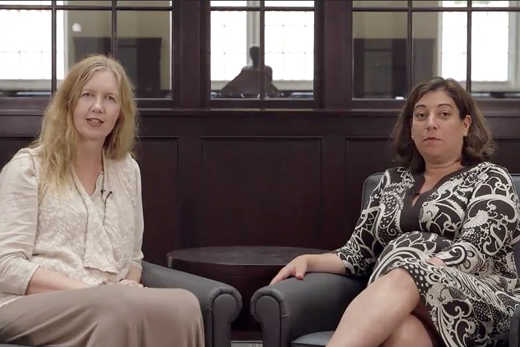In their upcoming free, open-access Coursera course, “Understanding Violence,” Emory professors Deb Houry and Pamela Scully offer a multidisciplinary glimpse into the complex problem of violence. Coursera is Emory’s partner for MOOCs (massive open online courses). The class runs Sept. 3 through Oct. 22.
“As an ER doctor I realized I couldn't just ‘treat and fix’ patients who came in after a violent incident,” says Houry, who holds multiple faculty appointments in the School of Medicine and Rollins School of Public Health. “I also realized that these injuries could be prevented if we worked with other disciplines, including law enforcement, nursing and public health.”
Scully, a historian and professor of Women’s, Gender and Sexuality Studies and of African Studies, broadens that scope further to integrate perspectives from the humanities and sciences, as well as various interdisciplinary perspectives.
“Violence happens in every sphere of our lives across the spectrum of personal, private, public,” she explains. “It happens in individual and collective spaces, to every individual, as an individual and to groups. Violence thus demands an interdisciplinary perspective in order to account for the complexity of its genesis, and how we might try and alleviate violence.”
This is the pair’s second collaboration around the topic of violence. They co-taught a similar university-wide class last year through the Center for Faculty Development and Excellence.
“As conveners we learned much from the faculty who taught classes on religion and violence, the results of trauma, the neuroscience of violence, and on efforts to end violence in communities both in the USA and other countries,” Scully says. “We also enjoyed bringing our own expertise on violence (sexual violence and injury control) into conversation with others.”
Their Coursera class covers the epidemiology of violence, its biological, psychological and social causes; specific types of violence; media portrayal of violence; the economic impact of violence; its physical and mental consequences; and ways to control and prevent violence in our communities, including criminal justice and public health approaches.
Houry and Scully are enthusiastic about the opportunity to reach a larger audience and to engage others in working towards solutions to violence through the open access format. Their audience appears eager as well. Weeks before the start of the course, there are already over 15,100 students enrolled.
“Violence is among the top three leading causes of death in those under the age of 44,” Houry says. “We must start working together and address it.”

